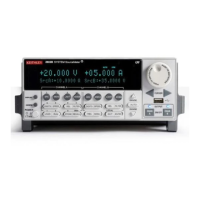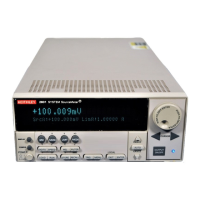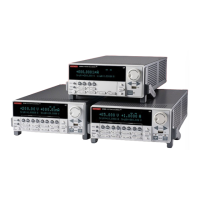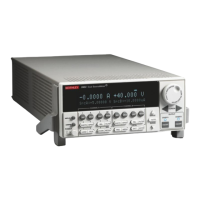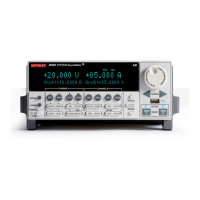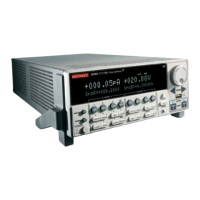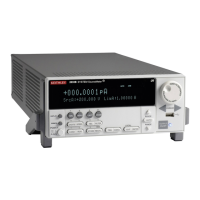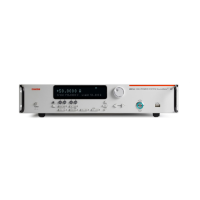19-32 Return to Section Topics 2600AS-901-01 Rev. B / September 2008
Section 19: Remote Commands Series 2600A System SourceMeter® Instruments Reference Manual
digio.trigger[N]
digio.readport
Function Reads the digital I/O port.
TSP-Link
accessibility
This function can be accessed from a remote TSP-Link node.
Usage data = digio.readport()
Remarks • The binary equivalent of the returned value indicates the input pattern on the I/O port. The least
significant bit of the binary number corresponds to line 1 and bit 14 corresponds to line 14. For
example, a returned value of 170 has a binary equivalent of 00000010101010. Lines 2, 4, 6 and
8 are high (1), and the other 10 lines are low (0).
Details See Digital I/O port in Section 8.
Also see digio.readbit, digio.writebit, digio.writeport
Example Assume lines 2, 4, 6 and 8 are set high, and the I/O port is then read:
data = digio.readport()
print(data)
Output: 1.700000e+02 (binary 10101010)
digio.trigger[N].assert
Replace N with the number of the digital I/O trigger line: 1 to 14.
Function Asserts a trigger on one of the digital I/O lines.
TSP-Link
accessibility
This function can be accessed from a remote TSP-Link node.
Usage digio.trigger[n].assert()
n The trigger line.
Remarks • The set pulse width determines how long the trigger is asserted.
Details See Interactive triggering in Section 10.
Also see digio.trigger[N].pulsewidth
Example Asserts a trigger on I/O line 2:
digio.trigger[2].assert()
digio.trigger[N].clear
Replace N with the number of the digital I/O trigger line: 1 to 14.
Function Clears a trigger event on a digital I/O line.
TSP-Link
accessibility
This function can be accessed from a remote TSP-Link node.
Usage digio.trigger[n].clear()
n The trigger line.
Remarks • The trigger event detector recalls if a trigger event has been detected since the last
digio.trigger[n].wait call.
• This function clears a trigger event detector, discards the previous history of the trigger line and
clears the digio.trigger[n].overrun attribute.
Details See Interactive triggering in Section 10.
Also see digio.trigger[N].stimulus
Example Clears trigger event on I/O line 2:
digio.trigger[2].clear()
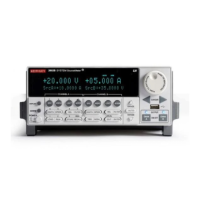
